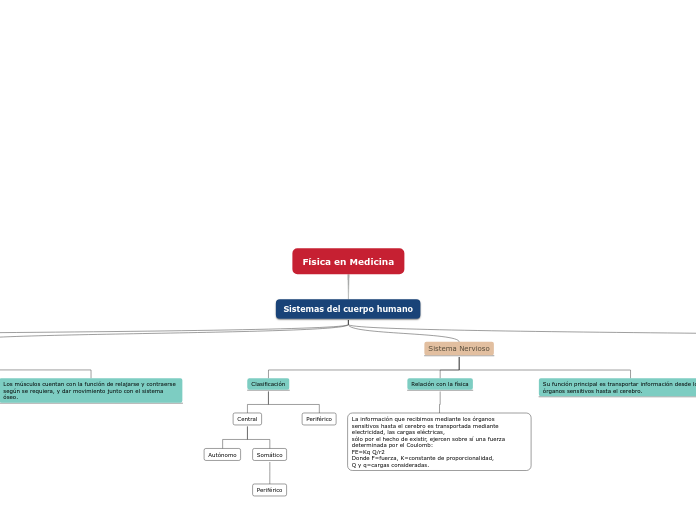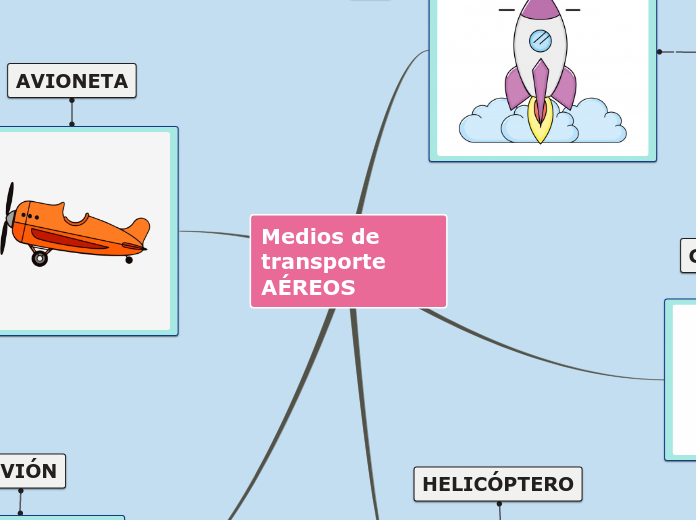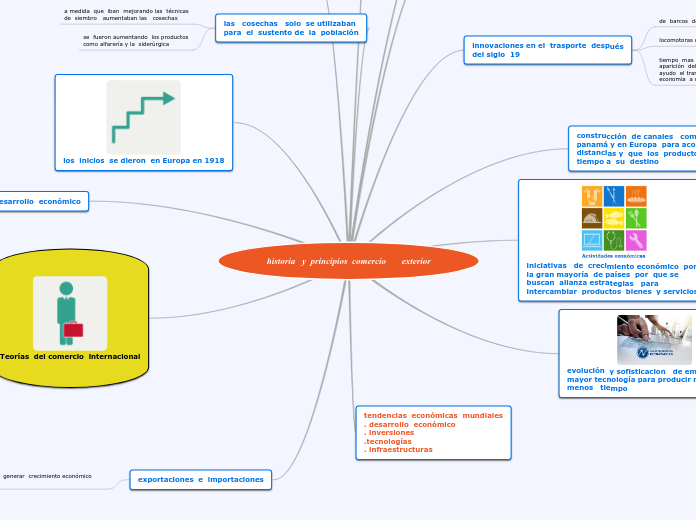Física en Medicina
Type in the name of the multiple-perspectives text.
Example: Bridge to Terabithia by Katherine Paterson
Sistemas del cuerpo humano
Identify an important issue from the text that is being presented from different angles. Type it in.
Example: Jesse's drawing talent.
Sistema Cardiovascular
Decide on the fourth point of view
Type in the name of the last character whose perspective on the issue you are going to present.
Example: Leslie Burke, Jesse's new next-door neighbor, and best friend.
Para saber cuánta sangre pasa por una vena o una arteria,
podríamos calcularlo por medio de una ecuación formulada por el matemático francés Poiseuille:
R= 8 l/ r
Su función consta de transportar materiales por todo el cuerpo, la sangre recoge el oxigeno de los pulmones y lo lleva a todo el cuerpo.
Point of view
Type in a relevant quote that highlights the character's point of view. Try to follow a citation format: author's name, chapter, and page.
Example: I can't get the poetry of the trees,' he said. She nodded. Don't worry,' she said. You will someday. He believed her.' (Paterson, 4. 24)
Vasos Sanguíneos
Sangre
Eritrocitos
Leucositos
Corazón
How is the viewpoint introduced in the story?
Choose an answer:
First person point of view - using the personal pronouns 'I' or 'we'Second person point of view - using the personal pronoun 'you'Third person point of view - using the third-person pronouns 'he', 'she' and 'they'Omniscient point of view - an all-seeing observer tells the story
Circulación pulmonar
Circulación sistemática
Sistema Nervioso
Whose character does the third point of view belong to?
Type in his/her name.
Example: Mr. Aarons, Jesse's father.
Su función principal es transportar información desde los órganos sensitivos hasta el cerebro.
La información que recibimos mediante los órganos
sensitivos hasta el cerebro es transportada mediante electricidad, las cargas eléctricas,
sólo por el hecho de existir, ejercen sobre sí una fuerza
determinada por el Coulomb:
FE=Kq Q/r2
Donde F=fuerza, K=constante de proporcionalidad,
Q y q=cargas consideradas.
What does the character think, say or do that suggests their perspective on the issue?
Type in a quote and try to maintain the citation format.
Example: 'He would like to show his drawings to his dad, but he didn't dare. (...) He'd thought his dad would be pleased. He wasn't. What are they teaching in that damn school? he had asked.' (Paterson, 2.8)
Central
Somático
Periférico
What kind of narration introduces the viewpoint?
Choose an answer:
First person point of view - using the personal pronouns 'I' or 'we'Second person point of view - using the personal pronoun 'you'Third person point of view - using the third-person pronouns 'he', 'she' and 'they'Omniscient point of view - an all-seeing observer tells the story
Autónomo
Sistema muscular
Decide on the second point of view
Name the character (it can either be the main character or one of the supporting characters) whose point of view you are presenting.
Example: Miss Edmunds, Jesse's music teacher.
Los músculos cuentan con la función de relajarse y contraerse según se requiera, y dar movimiento junto con el sistema óseo.
Relación con la física
Sobre los músculos actúan fuerzas tales como: peso, la fuerza de gravedad, compresión, etc.
El concepto de centro de gravedad se aplica para la terapia física.
Type in a quote that points out the character's position about the issue.
Try to follow a citation format: author's name, chapter, and page.
Example: 'She said he was unusually talented, and she hoped he wouldn't let anything discourage him.' (Paterson, 2. 8)
Lisos
Estriados
How is the viewpoint introduced in the story?
Choose an answer:
First person point of viewSecond person point of viewThird person point of viewOmniscient point of view
Sistema óseo
Decide on the first point of view you are going to present.
Type in the name of the character (it can either be the main character or one of the supporting characters) whose point of view belongs to.
Example: Jesse Oliver Aarons, Jr., the main character of the novel, a fifth-grader living in a rural Southern area.
Relación con la Física
Para determinar la resistencia de los huesos, se realizan pruebas mecánicas, con muestras, que determinan su resistencia ante las fuerzas a las que pueden estar sujetos, que se reducen a las de tensión, compresión y torsión.
Su principal función es darnos movilidad (correr, saltar, etc.) además del soporte, sobre todo en las piernas.
Clasificación
Type in a relevant quote that highlights the character's point of view towards
Sistemas del cuerpo humano.
Try following a citation format: author's name, chapter, and page.
Example: 'Jesse drew the way some people drank whiskey. (...) Lord, he loved to draw. (...) When he was in first grade, he told his father that he wanted to be an artist when he grew up.' (Paterson, 2. 7)
Esponjoso
What type of narration introduces the viewpoint?
Choose an answer:
First person point of view - using the personal pronouns 'I' or 'we'Second person point of view - using the personal pronoun 'you'Third person point of view - using the third-person pronouns 'he', 'she' and 'they'Omniscient point of view - an all-seeing observer tells the story
Solido









